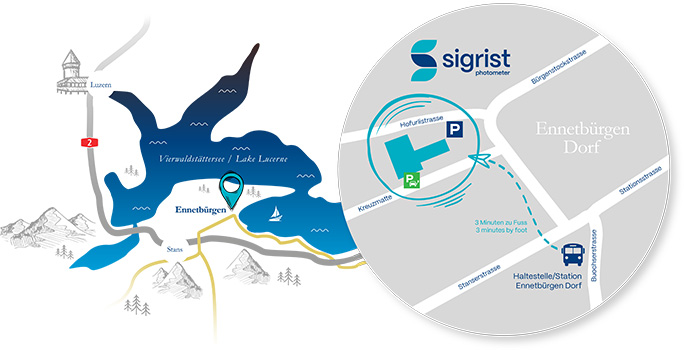Most common cleaning process for eliminating solids in drinking water treatment. Often preceded by a flocculation step to improve its efficiency.
During sand filtration, the water to be cleaned trickles through one or several layers of sand (Fig. 40a). The solids are deposited in the sand which increasingly reduces the filtering capacity. If the turbidity value of the filtered water exceeds a threshold value, a filter cleaning cycle is started (Fig. 40b) which back-washes the solids from the sand.
Measurement of the turbidity value is applied here for two purposes: monitoring of the actual filtration operation for breakthroughs, and optimization of the sand cleaning process. Figure 40 illustrates the change in turbidity during the cleaning cycle.
At measurement position 1 in Fig. 40a, the instrument measures the turbidity of the filtered water. Whenever purging of the sand layer is initiated because of the increasing turbidity, the sampling unit is switched to measure the purge water (position 2, Fig. 40b). At the end of the purging process, its turbidity falls to the level of the pure water, thus signalling that purging is complete. Now the system is switched back to filtration and position 1. The turbidity reading will be high at first, until the filtering sand layer has settled again, and will then drop back to the normal value for the purified water. This turbidity monitoring makes an important contribution to efficient operation of the treatment plant: the purging time and the amount of pure water consumed are optimal, and the quality of the filtrate is assured.

Fig. 40: a) Sand filtration during the normal filtration process with measuring position 1 and b) during the filter cleaning process with measuring position 2

Fig. 41: Course of turbidity prior to (position 1, Fig. 40a), during (position 2, Fig. 40b) and after (position 1, Fig. 40a) a filter cleaning process


